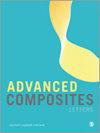不同方法生产不锈钢304L/蒙乃尔K-500复合材料的扩散焊
IF 2.1
4区 材料科学
Q3 MATERIALS SCIENCE, COMPOSITES
引用次数: 3
摘要
通过金属基复合材料粉末混合物的冷压制备的不锈钢304L(市售)和蒙乃尔K-500通过扩散焊接连接。在氩气气氛中,使用50µm厚的镍(Ni)和铝(Al)2024夹层在3 MPa、950–980°C下进行单轴压缩60分钟的焊接。焊接后,使用X射线衍射、光学显微镜、扫描电子显微镜和能量色散光谱分析对样品的扩散区和中间区进行了表征。在评价具有夹层的扩散区时,确定了不同的夹层由于扩散区温度的升高而膨胀。夹层在K-500侧扩展得更多,而在304L侧扩展得相对较少。另一方面,当检测具有Ni中间层的样品时,基材(304L)和中间层都含有大量的Ni,导致在扩散侧形成富Ni相。脆性的FeNi、Fe3Ni2、CuNi、Cu9Si、Cu0,81Ni0,19、Fe0,64Ni0,36、CrNi、Cr2Ni3、FeNi3、FeCu4和Al0.71Cr0.3Fe17.65在扩散区形成不规则。这些金属间相增加了通过扩散焊接连接的不同材料对的硬度并显著降低了延展性。结果,对试样进行了显微硬度和搭接剪切试验,以表征接头区的力学性能。在980°C、432.8 HV和165 MPa下,用Al夹层制成的接头获得了最大硬度和最大搭接剪切值。本文章由计算机程序翻译,如有差异,请以英文原文为准。
Diffusion welding of stainless steel 304L/Monel K-500 composite materials produced with different methods
The stainless steel 304L (commercially supplied) and Monel K-500 that was prepared through cold pressing of metal matrix composite materials powder mixtures were joined by diffusion welding. Welding was performed under uniaxial compression using the 50 µm-thick nickel (Ni) and aluminum (Al) 2024 interlayers under 3 MPa at 950–980°C for 60 min in an argon gas atmosphere. After welding, the diffusion and intermediate zones of the samples were characterized using X-ray diffraction, optical microscopy, scanning electron microscopy, and energy-dispersive spectrometry analysis. As evaluating the diffusion zone with interlayer, it was determined that different interlayers expanded due to increasing temperature of the diffusion area. Interlayers expanded more on the K-500 side and relatively less on the 304L side. On the other hand, when samples with Ni interlayers were examined, high amount of Ni contained by both base material (304L) and interlayer led to the formation of rich Ni phases in the diffusion side. The brittle FeNi, Fe3Ni2, CuNi, Cu9Si, Cu0,81Ni0,19, Fe0,64Ni0,36, CrNi, Cr2Ni3, FeNi3, FeCu4, and Al0.71Cr0.3Fe17.65, which were identified to form irregularity in the diffusion zone. These intermetallic phases increased the hardness and significantly decreased the ductility of different material couples joined by diffusion welding. As a result, the microhardness and lap shear tests were applied to specimens to characterize the mechanical properties of the joint zones. The maximum hardness and maximum lap shear values were obtained at joint that made with the Al interlayer at 980°C as 432.8 HV and 165 MPa.
求助全文
通过发布文献求助,成功后即可免费获取论文全文。
去求助
来源期刊

Advanced Composites Letters
工程技术-材料科学:复合
自引率
0.00%
发文量
0
审稿时长
4.2 months
期刊介绍:
Advanced Composites Letters is a peer reviewed, open access journal publishing research which focuses on the field of science and engineering of advanced composite materials or structures.
 求助内容:
求助内容: 应助结果提醒方式:
应助结果提醒方式:


